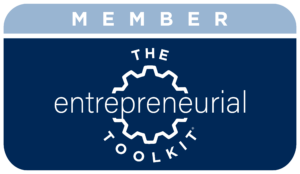No matter which social or economic forces cause a tight labor market, employers are often hard pressed to attract and retain high-performing workers – including top sales talent. And because sales reps are the frontline revenue generators in many organizations, when a sales superstar leaves, the ripple effects can be devastating. Why do so many companies struggle to attract and keep essential competent sales talent? Here are some primary problems and how sales managers and company leaders can overcome them.
Problem #1 (Part One): The Tight Labor Market – Retention
According to employee compensation expert Cassandra Faurote, author of Compensation Sense 101: Common Sense Answers to Your Questions About Employee Compensation and Total Rewards, when “a scarcity of talent … leads to employees having more leverage negotiating compensation and working conditions,” it signifies an “Employee Market.” Thus, when the pool of qualified competent job candidates is shallow, workers tend to have the upper hand and are more likely to seek more lucrative outside opportunities. Recent post-pandemic labor market statistics reported by the Society for Human Resource Management (SHRM), for example, indicate that “there were roughly two open jobs for every unemployed worker.” This is forcing employers to avoid “laying off workers given historically high hiring demand.” This level of employee “churn” has been so rapid it has spawned the social media hashtags #GreatResignation, #TurnoverTsunami, and #QuitStorm.
How can an employer slow the churn rate and improve sales talent retention? First, pay attention and listen to your sales reps. Seek to understand their frustrations and grievances, at both the market and company levels. Do they have the tools and resources and coaching they need to succeed? Are your sales processes clear and actionable? Are their goals and quotas fair and attainable?
Find ways to motivate them to succeed and reward them for doing so. Certainly, better sales compensation, benefits, and rewards might be in order (do you know the prevailing market rates and standards?), but sometimes the problem is closer to their heart than their pocketbook. Do they feel recognized for their efforts, valued for their contributions, and respected for their knowledge and work ethic? Do they have the flexibility necessary to maintain a positive work/life/family balance? And finally, do your sales reps feel connected to the company culture – and valued as a key contributor not only to the team, but also to the overall success of the company?
If your organization has clear weaknesses in any of these areas, waste no time in correcting the deficiencies. Satisfied employees are loyal employees. Period.
Problem #1 (Part Two): The Tight Labor Market – Attraction
Even if your organization has a solid record of employee support and satisfaction, a volatile employee market could still create forces that lure your sales reps to seek opportunities elsewhere. How can you attract top sales talent in a highly competitive market?
First, benchmark best practices from top employers inside and outside your industry. If you don’t know what you’re competing against – in terms of salary, benefits, perks, working conditions, and intangibles – how can you hope to stand out and rise above your competitors?
Next, stand on your reputation within your industry, with your customers, and with your current team. Motivated achievers want to work for the best. So, if you’ve worked hard to become a leading organization, tout your position.
When seeking top sales talent, especially in a tight labor market, don’t be afraid to look beyond your industry. Keen sales skills and a dedication to succeed are transferrable across markets. If your onboarding program and ongoing coaching and support are solid, your new sales rep will be on a path to succeed – especially if you can demonstrate how that path includes career growth opportunities. Unfortunately, according to an iCIMS Candidate Experience Report, “more than a quarter (26%) [of job candidates] have quit a job specifically because they didn’t feel they were onboarded or trained properly.”
Finally, recognize that attracting and hiring top-notch sales professionals is not easy. More than that, it can be so time consuming that it distracts from critical management of day-to-day, quarter-by-quarter, and year-over-year operations. For many organizations, it certainly pays to entrust employee recruiting to a trusted professional sales recruiting firm.
Problem #2: Managing Day-to-Day Challenges
Once you’ve succeeded in hiring and onboarding new sales talent and they are integrated into your overall organization, look at how you can best lead and manage your team. If lack of direction and leadership has already put your sales department in a vulnerable position that resulted in the loss of key performers, address that root cause. With companies of all sizes running lean, internal staff can be overworked and overwhelmed. Many organizations, especially small to mid-sized companies, benefit from bringing in an Outsourced VP of Sales. Even as an interim measure in which the OVPS serves on a fractional time basis, such a resource can be highly cost-effective and bring crucial perspective, experience, and expertise to elevate your sales organization.
Why do so many companies find it difficult to attract and keep essential competent sales talent? Simply put, most organizations are built to make money doing the business at hand – not to efficiently manage the process and expense of attracting and retaining employees. And in a tight labor market, this problem only gets worse if not addressed. The good news is that getting (and staying) ahead of the sales talent dilemma can provide a competitive advantage while other companies continue to struggle.
At Amplify, we understand finding top performers is a challenge. If you’d like help hiring the right candidate, the first time, contact us today.








